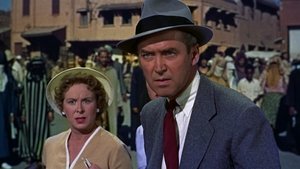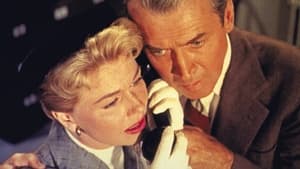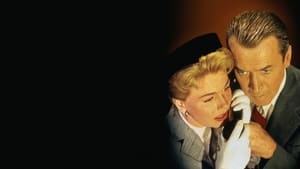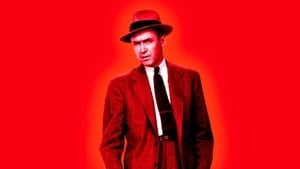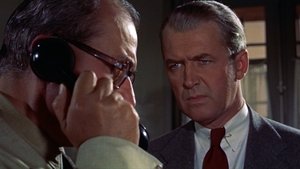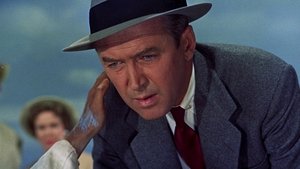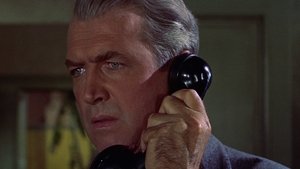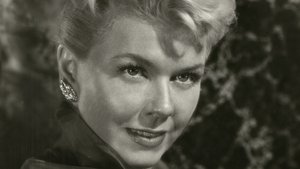Contact: [email protected]
Video Sources 0 Views
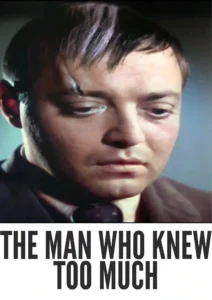
Synopsis
The Man Who Knew Too Much 1956: A Thrilling Review of Hitchcock’s Classic

Introduction
Alfred Hitchcock’s “The Man Who Knew Too Much” (1956) stands as a timeless classic in the realm of suspenseful cinema. With its gripping narrative, unforgettable performances, and Hitchcock’s trademark directorial flair, this film continues to captivate audiences decades after its initial release. In this review, we delve into the intricacies of this cinematic gem, exploring its plot, characters, and the impact of its early colored version on the world of cinema.
Check The Full Colorized Movies List
Check Our Colorized Movies Trailer Channel
Understanding The Man Who Knew Too Much 1956: Director, Cast, and Genre
Directed by the legendary Alfred Hitchcock, “The Man Who Knew Too Much” showcases the master filmmaker’s keen eye for suspense and tension. With Hitchcock at the helm, the film delivers a thrilling experience that keeps viewers on the edge of their seats from start to finish. The stellar cast includes James Stewart in the role of Dr. Ben McKenna and Doris Day as his wife, Jo McKenna. Stewart’s commanding presence and Day’s compelling performance add depth and nuance to their respective characters, making them instantly relatable to audiences. As for the genre, “The Man Who Knew Too Much” seamlessly blends elements of suspense, drama, and mystery, creating a cinematic experience that transcends traditional genre boundaries.
Exploring the World of The Man Who Knew Too Much 1956: Plot and Characters
The film follows the McKenna family as they embark on a vacation to Morocco, only to find themselves embroiled in a web of intrigue and danger. When their young son Hank is kidnapped by a group of international spies, Ben and Jo must race against time to save him and unravel the mystery behind the kidnapping. Along the way, they encounter a series of colorful characters, including the enigmatic spy Louis Bernard and the resourceful police inspector Buchanan. As the stakes continue to rise, Ben and Jo find themselves drawn deeper into a world of espionage and betrayal, where every decision could mean the difference between life and death.
The Art of Film Colorization
One of the most striking aspects of “The Man Who Knew Too Much” is its early colored version, which adds a new dimension to Hitchcock’s vision. While the original black-and-white format remains a classic choice, the colorized version breathes new life into the film, allowing viewers to experience its rich visual tapestry in vibrant detail. The use of color enhances the film’s atmosphere, from the sun-drenched streets of Morocco to the shadowy interiors where danger lurks around every corner. While some purists may argue against colorization, there’s no denying the impact it has on the viewing experience, bringing Hitchcock’s masterpiece to a whole new generation of audiences.
Early Colored Films: A Brief History
The early days of cinema were dominated by black-and-white films, with colorization being a relatively new development in the industry. In the mid-20th century, advances in technology allowed filmmakers to experiment with color, leading to the emergence of early colored films. While the transition from black-and-white to color was met with skepticism by some, it opened up new creative possibilities for filmmakers and expanded the visual language of cinema. “The Man Who Knew Too Much” stands as a prime example of this transition, showcasing the potential of color to enhance storytelling and immerse audiences in the world of the film.
The Man Who Knew Too Much 1956 and Its Early Colored Version
The decision to release “The Man Who Knew Too Much” in a colorized format was a bold one, but it ultimately paid off, breathing new life into Hitchcock’s classic thriller. The early colored version of the film retains all the suspense and intrigue of the original while adding a fresh visual perspective that enhances the viewing experience. From the vibrant hues of the Moroccan landscape to the subtle nuances of the characters’ expressions, colorization brings an added layer of depth to the film, allowing viewers to engage with it on a whole new level.
The Debate Over Film Colorization
Despite its many benefits, film colorization remains a controversial topic in the world of cinema. Some argue that colorization compromises the artistic integrity of black-and-white films, altering the director’s original vision and detracting from the overall viewing experience. Others see it as a valuable tool for preserving and reimagining classic films for modern audiences. The debate over film colorization continues to rage on, with passionate arguments on both sides of the issue.
Examining The Man Who Knew Too Much 1956 as an Early Colored Film
As an early example of colorized cinema, “The Man Who Knew Too Much” offers valuable insights into the potential of this emerging technology. While purists may prefer the original black-and-white version, there’s no denying the impact that colorization has on the film’s visual storytelling. From the lush landscapes to the subtle details of the characters’ costumes, color adds an extra layer of realism and immersion to Hitchcock’s classic thriller. Whether viewed in black-and-white or color, “The Man Who Knew Too Much” remains a masterclass in suspenseful storytelling, showcasing Hitchcock’s unparalleled skill as a filmmaker.
Influence and Legacy: The Man Who Knew Too Much 1956’s Impact on Cinema
“The Man Who Knew Too Much” has left an indelible mark on the world of cinema, inspiring countless filmmakers and captivating audiences for generations. Its influence can be seen in the countless suspense thrillers that followed in its wake, as well as in the enduring popularity of Hitchcock’s body of work. The film’s early colored version has also contributed to its legacy, paving the way for future experiments in colorization and expanding the possibilities of visual storytelling.
Director’s Cinematic Legacy: Beyond The Man Who Knew Too Much 1956
Alfred Hitchcock’s legacy extends far beyond “The Man Who Knew Too Much,” with the director leaving an indelible mark on the world of cinema. His innovative storytelling techniques, meticulous attention to detail, and groundbreaking use of suspense have cemented his status as one of the greatest filmmakers of all time. Hitchcock’s influence can be seen in the work of countless directors who have been inspired by his work, from Steven Spielberg to Martin Scorsese. His films continue to be studied, analyzed, and celebrated by cinephiles around the world, ensuring that his legacy will endure for generations to come.
Themes Explored in The Man Who Knew Too Much 1956
At its core, “The Man Who Knew Too Much” is a film about the perils of knowledge and the lengths to which people will go to protect their loved ones. Themes of sacrifice, loyalty, and redemption are woven throughout the narrative, as Ben and Jo McKenna are forced to confront their own fears and insecurities in order to save their son. The film also explores the nature of trust and betrayal, as the McKennas navigate a world where nothing is as it seems and danger lurks around every corner. Through its compelling characters and intricate plot, “The Man Who Knew Too Much” offers a gripping exploration of the human condition and the moral dilemmas we face in times of crisis.
Reception and Controversy Surrounding The Man Who Knew Too Much 1956
Upon its release, “The Man Who Knew Too Much” received widespread critical acclaim, with praise for its suspenseful storytelling, strong performances, and Hitchcock’s masterful direction. Audiences were captivated by the film’s thrilling narrative and nail-biting suspense, making it a commercial success at the box office. However, the decision to release the film in a colorized format sparked controversy among some cinephiles, who argued that it compromised the artistic integrity of Hitchcock’s original vision. Despite these concerns, “The Man Who Knew Too Much” remains a beloved classic of the suspense genre, revered by critics and audiences alike for its timeless storytelling and enduring appeal.
Where to Watch The Man Who Knew Too Much 1956 Online
For those eager to experience the thrills of “The Man Who Knew Too Much,” the film is readily available on popular streaming platforms such as Amazon Prime Video, iTunes, Google Play, and YouTube Movies. Whether you prefer the original black-and-white version or the early colored edition, there are plenty of options to choose from, allowing viewers to enjoy Hitchcock’s classic thriller in the format of their choosing.
FAQs About The Man Who Knew Too Much 1956
Q: Is “The Man Who Knew Too Much” based on a true story? A: While “The Man Who Knew Too Much” is not based on a specific true story, it draws inspiration from real-life events and espionage activities prevalent during the Cold War era. Hitchcock took creative liberties with the narrative, crafting a gripping tale of intrigue and suspense that continues to captivate audiences to this day.
Q: Who composed the iconic soundtrack for “The Man Who Knew Too Much”? A: The film’s memorable soundtrack was composed by legendary composer Bernard Herrmann, who collaborated with Hitchcock on several of his most famous films, including “Psycho” and “Vertigo.” Herrmann’s haunting score adds an extra layer of tension and drama to the film, enhancing its overall impact on the viewer.
Q: Are there any notable differences between the original black-and-white version and the early colored edition of “The Man Who Knew Too Much”? A: While the overall plot and performances remain the same in both versions of the film, the early colored edition features vibrant hues and enhanced visual effects that add an extra layer of depth to the viewing experience. Some purists may prefer the original black-and-white version for its classic aesthetic, while others may appreciate the added realism and immersion of the colorized edition.
Conclusion
“The Man Who Knew Too Much” (1956) stands as a testament to Alfred Hitchcock’s unparalleled skill as a filmmaker and storyteller. Whether viewed in its original black-and-white format or its early colored version, the film continues to enthrall audiences with its gripping narrative, unforgettable performances, and Hitchcock’s masterful direction. As we reflect on the enduring legacy of “The Man Who Knew Too Much,” we are reminded of the timeless appeal of classic cinema and the transformative power of storytelling. So, whether you’re a seasoned cinephile or a casual moviegoer, be sure to experience the thrills of “The Man Who Knew Too Much” for yourself—you won’t be disappointed.
